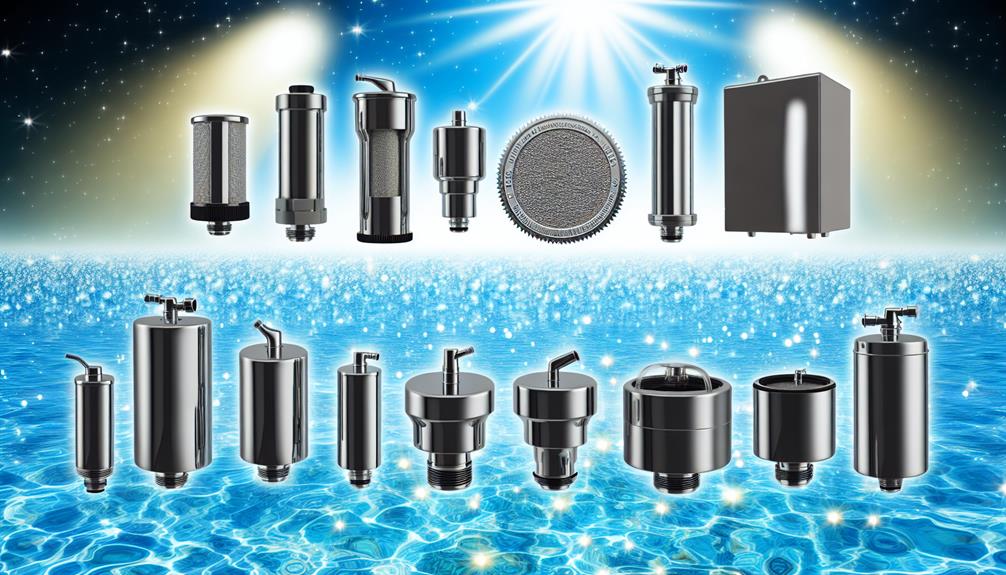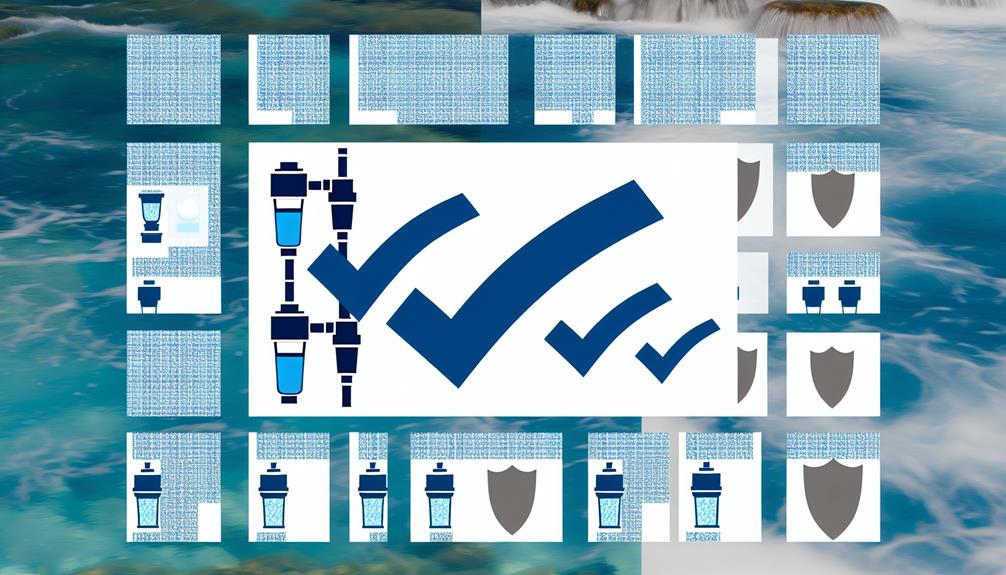Navigating the waters of home water purifier standards can be as complex as a river's network of tributaries, each path leading to a different level of purity and safety. You're entrusted with the well-being of your household, and it's essential that you understand the labyrinth of regulations and certifications that can ensure your drinking water is free from contaminants.
Certified filters, like those meeting NSF/ANSI 42 and 53 standards, are your assurance against unseen hazards lurking in your water. However, the certification is just the beginning; you must also stay vigilant with maintenance to keep the shield of safety intact.
As you weigh the importance of these water guardians, remember that the health of your family may hinge on the choices you make now, and the ongoing diligence you apply to your home's water purity.
What steps can you take to ensure that your water purifier meets and maintains the highest standards, and what might be the consequences if these standards are overlooked?
Understanding NSF/ANSI Standards
To ensure the safety and effectiveness of home water purifiers, it's crucial to understand the NSF/ANSI Standards which serve as benchmarks for certifying water treatment devices. These standards aren't just guidelines but often a mandatory requirement enforced by retailers, plumbing codes, and state regulations.
For instance, the NSF/ANSI 42 standard focuses on assessing water filters designed to address aesthetic issues, such as taste and odor, ensuring your water isn't only safe but also pleasant to drink.
On a more critical note, the NSF/ANSI 53 standard scrutinizes filters that are certified to reduce health-related contaminants from drinking water. This is vital because these contaminants can have significant health effects, and the standard acts as a safeguard aligned with Environmental Protection Agency (EPA) guidelines.
For water with uncertain microbiological quality, NSF P231 is the go-to standard. It evaluates purifiers aimed at reducing pathogens like bacteria, viruses, and cysts.
Meanwhile, NSF/ANSI 58 sets the criteria for point-of-use reverse osmosis systems, which are advanced Drinking Water Systems capable of removing a broad spectrum of contaminants.
Selecting Certified Water Purifiers
When selecting a water purifier for your home, it's essential to choose one that meets NSF/ANSI standards 42 and 53, ensuring reduction of both aesthetic and health-related contaminants. Your choice should hinge on data-driven evaluations, specifically seeking products certified by an independent authority.
For instance, water filters that also comply with NSF P231 are proven to mitigate bacteria, viruses, and cysts, particularly critical when dealing with water of uncertain microbiological quality.
Delving deeper, if your concerns include specific contaminants like lead or PFAS, Reverse osmosis systems certified to NSF/ANSI 58 are highly effective. They're rigorously tested to ensure removal of such elements from your drinking water. Additionally, opting for treatment systems verified by UL Solutions adds another layer of assurance. Not only does this confirm their efficacy, but it also guarantees the safety of the materials in contact with your water, the structural integrity of the system, and the accuracy of product literature.
For outdoor enthusiasts or those needing portable solutions, industry standards for backcountry water filters shouldn't be overlooked. Ensure your filtration system, possibly incorporating activated carbon filters, is certified to tackle specific environmental threats, aligning with EPA standards and guaranteeing safe drinking water.
Regular Maintenance Protocols
Having selected a water purifier that meets rigorous standards, you must now establish regular maintenance protocols to maintain its effectiveness and ensure safety. To uphold the integrity of your home water treatment system, adherence to a structured schedule for replacing filter cartridges is critical. This isn't merely a suggestion but a requirement grounded in manufacturer recommendations, designed to preserve the system's capacity to reduce contaminants effectively.
Your vigilance in cleaning both exterior and interior components is crucial in averting bacterial growth, thus safeguarding Microbiological Water safety. Notably, the NSF/ANSI standard underscores the importance of sanitizing water contact surfaces within the system. This practice isn't only about cleanliness but also about preventing the insidious threat of contamination.
Furthermore, conducting routine water quality tests offers quantifiable assurance that your purifier is performing its essential function—delivering safe, public drinking water standards into your home.
Identifying Contaminant Reduction Claims
You should meticulously examine the contaminant reduction claims on a water purifier's packaging or advertisements to verify its efficacy against specific pollutants of concern. When assessing a water purifier's capabilities, it's crucial to match the treatment system to the contaminants in your drinking water. Filters vary in their effectiveness; for instance, carbon/charcoal filters primarily reduce chlorine, byproducts, and odors, whereas options such as distillation and reverse osmosis are adept at reducing lead content.
To ensure safe water, select filters that meet rigorous standards. Look for third-party certification, such as those adhering to NSF/ANSI Standard 53 or 58, which are specifically designed to reduce lead. This certification is a testament to a filter's ability to remove certain health-related contaminants.
Moreover, when it's time to replace filter components, using certified cartridges is imperative to maintain the quality of your water. Don't overlook independent product reviews as they provide an additional layer of verification for a water purifier's contaminant reduction claims.
Ultimately, consider which impurities you need to eliminate and analyze various filters based on your filtration requirements, lifestyle, and budget. This data-driven approach will guide you in maintaining high standards for your drinking water quality.
Community and Environmental Impact
Selecting a water purifier extends beyond individual needs; it's equally important to consider the system's broader impact on community health and local ecosystems. When you're in the market for a water purifier, it's crucial to analyze the potential community and environmental impact of your choice. Here's an analytical breakdown:
- Public Health and Safety: Ensure the water purifier is regulated by the EPA and meets NSF/ANSI standards for removing emerging contaminants from drinking water.
- Environmental Impact: Choose water systems designed to reduce waste and are mindful of the ecological footprint from production to disposal.
- Water Softeners and Disposal: Water softeners can introduce excess sodium into public water systems. Opt for models with environmentally friendly disposal options for spent cartridges.
- Third-Party Certifications: Look for products with a third-party seal of approval, such as the Protocol for Testing Microbiological Water Purifiers, to guarantee they align with public health objectives and sustainable practices.

